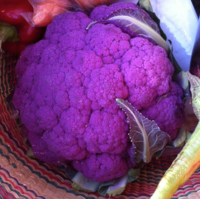
Photo from wikipedia
Lilium is a popular cut flower that is highly favored by consumers due to its snowy white color and strong fragrance, which originates from the release of monoterpenes. However, the… Click to show full abstract
Lilium is a popular cut flower that is highly favored by consumers due to its snowy white color and strong fragrance, which originates from the release of monoterpenes. However, the underlying molecular mechanism of monoterpene synthesis remains poorly understood. In this study, the content of three main monoterpenes (linalool, ocimene, and myrcene) was examined in Lilium ‘Siberia’, and RNA sequencing of the 11 stages of flower development was conducted. The biosynthesis of the three monoterpenes increased with flower development, reaching their peak levels at the full flowering stage. Transcriptome data revealed 257,140 unigenes, with an average size of 794 bp, from which 43,934 differentially expressed genes were identified and enriched in the KEGG pathways partly involved in plant hormone signal transduction and monoterpenoid biosynthesis. Furthermore, the essential factor LiMYB305 was identified by WGCNA after the release of the flower fragrance. The transient silencing of LiMYB305 in petals using VIGS technology showed that the mRNA expression levels of LiLiS, LiOcS, and LiMyS were significantly downregulated and that the release of linalool, ocimene, and myrcene had decreased significantly. Y1H, LUC, and EMSA experiments revealed that LiMYB305 directly bound and activated the LiOcS promoter to increase the synthesis of monoterpenes. Taken together, these results provide insight into the molecular mechanism of monoterpene synthesis and provide valuable information to investigate the formation of the flower fragrance in Lilium.
Journal Title: Frontiers in Plant Science
Year Published: 2022
Link to full text (if available)
Share on Social Media: Sign Up to like & get
recommendations!